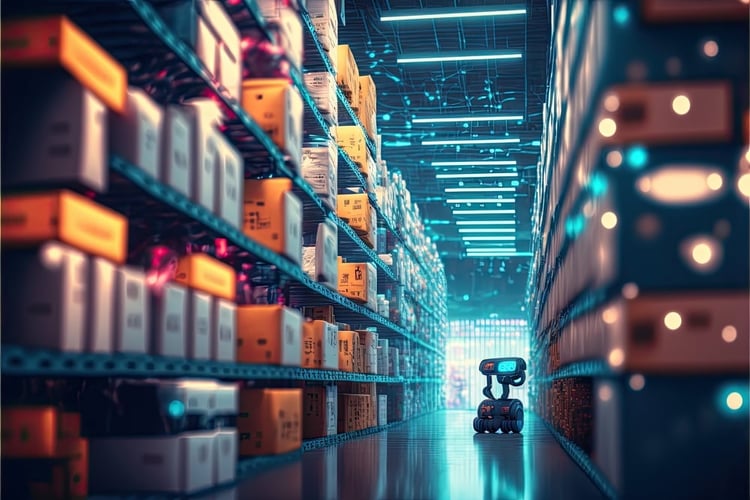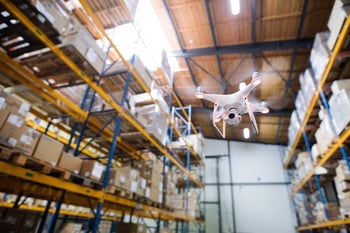
Supply chains have continued to recover after the turbulence and shutdowns caused by the COVID-19 pandemic (as well as the ongoing US-China trade war and the Russian siege on Ukraine). Manufacturers and retailers must focus on building resilience in 2024 as they manage a vulnerable but slowly improving supply chain. Here are some risks that still exist in the supply chain and what we can expect as we head into 2024 and beyond.
Risks That Continue to Persist in the Supply Chain
Anything that can potentially disrupt the supply chain is considered a risk. While we may not be facing many of the troubles, we were just a few short years ago, some supply chain risks remain persistent.
1. Labor Shortages
Supply chain partners have experienced massive labor shortages in recent years, mainly due to a number of external challenges like the COVID-19 pandemic, political instability, inflation, and more. Labor shortages in one industry, like manufacturing, can have ripple effects on others, like warehousing and logistics.
2. Rising Costs
The supply chain is a series of interconnected systems and partners. So, when prices go up in one area, the effect can reverberate down the line. If manufacturing or transportation costs go up, this can impact warehousing and other costs.
3. Freight Bottlenecks and Congestion
 No one wants another Suez Canal blockage in the coming year, but freight bottlenecks continue to be a source of high risk for supply chain partners. At the same time, labor shortages and outdated systems can still lead to congestion at major ports and leave supply chain partners searching for adequate space.
No one wants another Suez Canal blockage in the coming year, but freight bottlenecks continue to be a source of high risk for supply chain partners. At the same time, labor shortages and outdated systems can still lead to congestion at major ports and leave supply chain partners searching for adequate space.
4. Lack of Sustainability
Government regulations and consumer sentiment require that businesses take sustainability more seriously. Businesses throughout the supply chain will need to create more sustainable processes moving forward.
What We Can Expect in the Supply Chain in 2024
Even when many of the risks that crippled the supply have dissipated, businesses have learned that the old ways of managing networks are no longer sufficient. Here are some of the supply chain trends we can expect to see in 2024 and beyond as businesses continue to innovate.
Omnichannel Fulfillment is Growing
Having all products stored at a single location may not be the best approach. One of the lessons learned from the pandemic is that consumer preferences can change quickly, and businesses need to create more options to maximize their results.
Companies are now offering consumers more choices, such as buy-online-pickup-in-store (BOPIS), and minimizing costs by dispersing inventory across many locations. When a customer places an order, they can choose how they will receive it. If it is being shipped, it can come from a store or warehouse closest to them to speed up delivery and reduce costs.
Direct-to-Consumer Offers New Options
More and more brands are exploring direct-to-consumer (DTC) options to satisfy consumers who believe that purchasing directly from brands will garner a better overall experience. Research predicted that the DTC market would reach $213 billion by the end of 2023. Just because brands are selling directly, that doesn't necessarily mean they are handling the fulfilment and logistics functions. They will still need quality partners for these areas of their business.
Real-Time Information Reduces Risk
The lack of visibility throughout the supply chain has had negative implications for businesses in the form of not meeting consumer expectations and failing to meet business goals. Implementing technology such as warehouse management systems (WMS) and RFID tags is injecting more visibility throughout the supply chain. When this information is shared among supply chain partners and even with consumers, there is more clear insight into potential risks and opportunities.
Demand-Supply Matching Lowers Costs
Many businesses ditched just-in-time inventory management during the COVID-19 pandemic because it was no longer effective. But it's also not feasible from a cost perspective to stockpile inventory, some of which could go bad or fall out of favor with consumers. Using advanced technology solutions, many businesses going forward will be leveraging demand-supply matching algorithms to optimize manufacturing capacity and the use of warehouse resources. This strategy will reduce stockouts and lower overall costs.
Automation Solutions Remain a Priority
Automation and robotics will continue to transform the supply chain in 2024. The emphasis going forward will be on implementing intelligent automation solutions aimed at streamlining repetitive tasks, minimizing errors, accelerating order fulfillment, reducing labor costs, and improving overall operations efficiency. Some examples include:

- Automated picking systems
- Robots and cobots
- Automated guided vehicles (AGVs)
- Automated storage and retrieval systems
- Drones
- Employee wearable technology
- RFID tags
- Mobile powered carts
Green and Circular Supply Chains
Rising pressure from consumers, regulators, employees, and investors is driving supply chain organizations to establish ambitious goals for sustainability. Achieving net-zero waste and becoming carbon neutral will require a concentrated effort across all levels of the supply chain. Partners will need to collaborate on using more eco-friendly packaging. Implementing the right technology and establishing clear goals to create accountability heading into the future.
Artificial Intelligence Revolutionizes Operations
Advances in artificial intelligence (AI) are happening at a staggering rate and delivering immediate benefits to supply chain partners in the areas of inventory management, intelligent sources, and logistical route planning. Augmented reality provides better quality control, training, and maintenance. And machine learning, a subset of AI, helps warehouses create better layouts and make more informed business decisions.
The global supply chain has faced several years' worth of disruptions, many of which continue to persist. While some activity has normalized over the past year, organizations are innovating to address ongoing and potential risks and create the most efficient and resilient operations possible. In particular, various technology solutions will enable supply chain partners to save costs, be more sustainable, and deliver a better customer experience.












